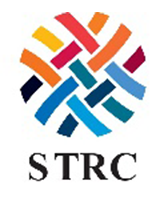Rick Stanford Brands and Retailers and consequently textile manufacturers are under tremendous pressure from consumers to provide products that are manufactured in a sustainable way. Baldwin Technology will present case studies how transitioning from pad application to spray finishing saves water, chemistry and significantly lowers the carbon footprint in the finishing department.
Category: Abstracts 2024
Unlocking the Potential of Biobased Materials for Reduction of Environmental Impact
Dr. Ludwig Huber The upcoming economic transformation towards a more sustainable use of materials andenergy to decouple economic growth from greenhouse gas emissions will be anoutstanding challenge for the next decades. Key drivers influencing these ambitions fortransition is customer expectations, approaching regulations, and the intrinsic motivationto design state of the art of sustainable chemistry. In […]
History, Capabilities and Future Plans for the Manufacturing Solutions Center
Jeff NeuvilleDirector, Manufacturing Solutions Center at Catawba Valley Community College Created as the Hosiery Technology Center in 1990, the Manufacturing Solutions Center (MSC) at Catawba Valley Community College has evolved into a nationally known and trusted resource for manufacturers throughout the United States. With an ISO accredited testing lab, knitting labs for product development support, […]
Measuring UV Protection for Apparel Fabrics
Diana Wyman Most people understand why UV protection is important – exposure to ultraviolet radiation from the sun can cause uncomfortable sunburns and deadly cancers. Clothing and headwear are key sources of protection when they are tested, labeled, and worn correctly. Examine the science of ultraviolet protection factor, or UPF, and the art of making […]
